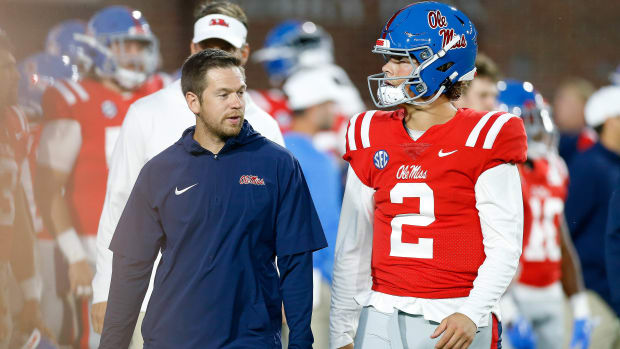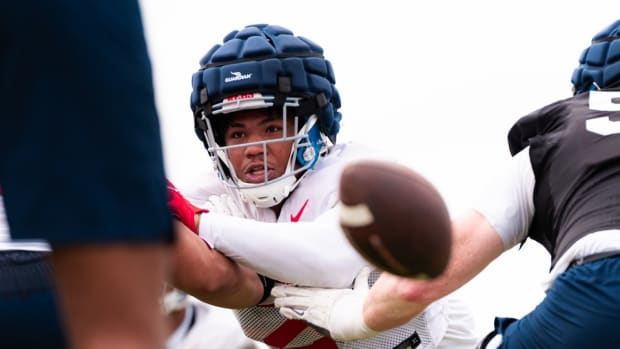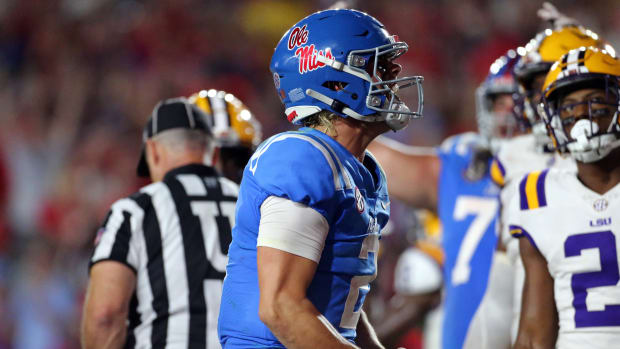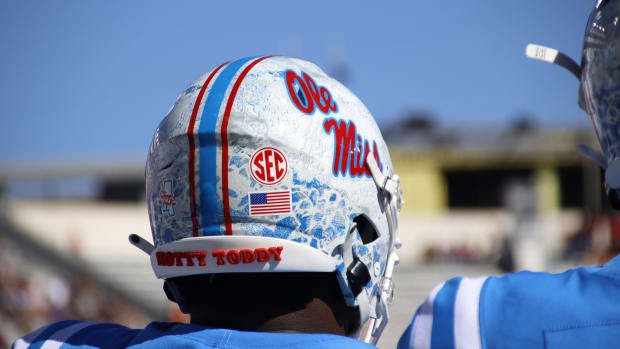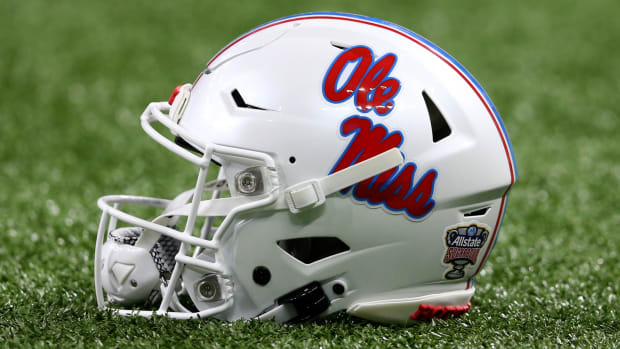Learning From Lane Kiffin's Play-Calling History: The First USC Stint
Everything has changed.
Rewatching college football games from 2005 and 2006 is like a time capsule. No, it's not black and white, but at times the way the game is played might appear like a movie from the 1970s.
But there's still value in a look into the past.
Lane Kiffin took over offensive coordinator duties at Southern California in 2005, his fifth year under Pete Carrol. Since then, he has served as either a head coach or offensive coordinator all over the map, from USC to the NFL, from Tennessee back to USC and from Alabama to Florida Atlantic.
Now, he's in Oxford, Miss., where he'll be on the serving as the head coach of a power-five school at Ole Miss for the first time since 2013 at USC.
Over the past handful of days, we've gone back to take a look at the early days of the Lane Kiffin offenses, trying to figure out what we can learn about how the 2020 Ole Miss team will operate.
At times, the game has simply evolved, as evident in the way Kiffin calls plays and adapts as the sport does. But there's still some relevancy in the way he deploys his units, even in a game that's completely different than it was 15 years prior.
USC went 12-1 in 2005, Kiffin's first year as offensive coordinator. The only game they lost, the 2006 Rose Bowl against Texas, very well may be the best national championship game of all time.
That year was special. The team fielded Reggie Bush, Matt Leinart and LenDale White, as well as a litany of other NFL talent. In 2006, Bush, Leinart and White were all gone. The Kiffin offense looked very much different.
In a three-game sample of games watched, USC ran 41-percent of their plays in 2005 out of 21 personnel (two running backs, one tight end, two receivers). In 2006, with the departure of Bush and White in the backfield, that number dropped to 18-percent.
It's a number that dictates how Kiffin operates. His best teams have revolved around finding unique ways to get the ball into the hands of his best playmakers.
Six separate times in one game against Notre Dame early in 2005, Kiffin sent Bush out in motion before the snap, taking him from an I-formation tailback to receiving role. In the play shown above, the ball doesn't even go in Bush' way, but the whole thing is predicated on isolating mismatches and stressing a defense.
That sort of play calling was not normal in 2005 the way it is today. Kiffin's main goal was simply to get balls to his best playmakers in any way possible, and let them eat. If the best way to do that was by making a linebacker cover Bush in coverage, so be it.
At times, they'd do more bizarre things just to keep the defense guessing on where those playmakers would be. Here, they start completely empty before motioning back to a heavy set.
In 2006, that changed. John David Booty and Chauncey Washington were not Matt Leinart and Reggie Bush. Yet the team still went 11-2, finishing No. 4 in the AP Poll. That year, the offense looked very different.
Without Bush, the team went to a more pass-heavy approach. In 2005, USC ranked No. 48 nationally in passing percentage. In 2006, they jumped to No. 24.
In another three game sample of games watched from 2006, the team ran 47-percent of their plays out of 11 personnel (one running back, one tight end, three receivers). That 11 personnel grouping spreads the field out, creating larger passing lanes. It's the predominant personnel grouping used in football today.
The funny part about watching more of a spread style team in 2006, is that they did literally everything under center.
Throwing the ball more and with a less talented quarterback than prior, Kiffin did a lot more to make things easy on his quarterback in 2006. In the '06 Notre Dame win, Kiffin used five different personnel groupings in the first eight plays, just to keep the defense off balance.
Play action wasn't called a ton, but it was called on nearly double the rate as the year prior. It's not a novel concept at all, but it's away to manufacture easy throws for John David Booty.
What can we learn from this and apply to Ole Miss in 2020?
Clearly, the Ole Miss offense in 2020 will look nothing like above clips. We can virtually guarantee the offense will operate primarily in the shotgun, something that literally never happened watching Kiffin's USC teams in 2005 and 2006.
But some things are going to likely stay the same. Kiffin's run-to-pass ratio at FAU in 2019 (48.8% pass) was nearly identical to these early USC years (48.5% and 52.6% passing).
The base fundamentals of the offense will be the same – he's going to try manufacture different ways to get the ball into the hands of the team's best playmakers in space and manufacture easy throws for whoever the quarterback is.
There's a very strong chance Ole Miss running back Jerrion Ealy will be used in some of the roles we saw above with Reggie Bush. We're not going to compare Ealy to Bush, but what they do have is a similar skillset of being explosive running downhill in the box and being fantastic in the passing game. And that's not all that common, even in college football in 2020.
The point is simple – 2020 Ole Miss will look quite different from time-machine football shown above. But there's still aspects of digging into Kiffin's mind that are worthwhile.
Later this week, we'll take a look at Kiffin's days with the Oakland Raiders and Tennessee Volunteers before slowly making our way to his most recent stop at FAU.
Will the Kiffin experiment work in Oxford? Time will tell. But it should be fun.
You can join The Grove Report community by clicking "Follow" on the top righthand corner of the page. Also, be sure to like us on Facebook and follow us on Twitter @SIRebels and @nategabler.

